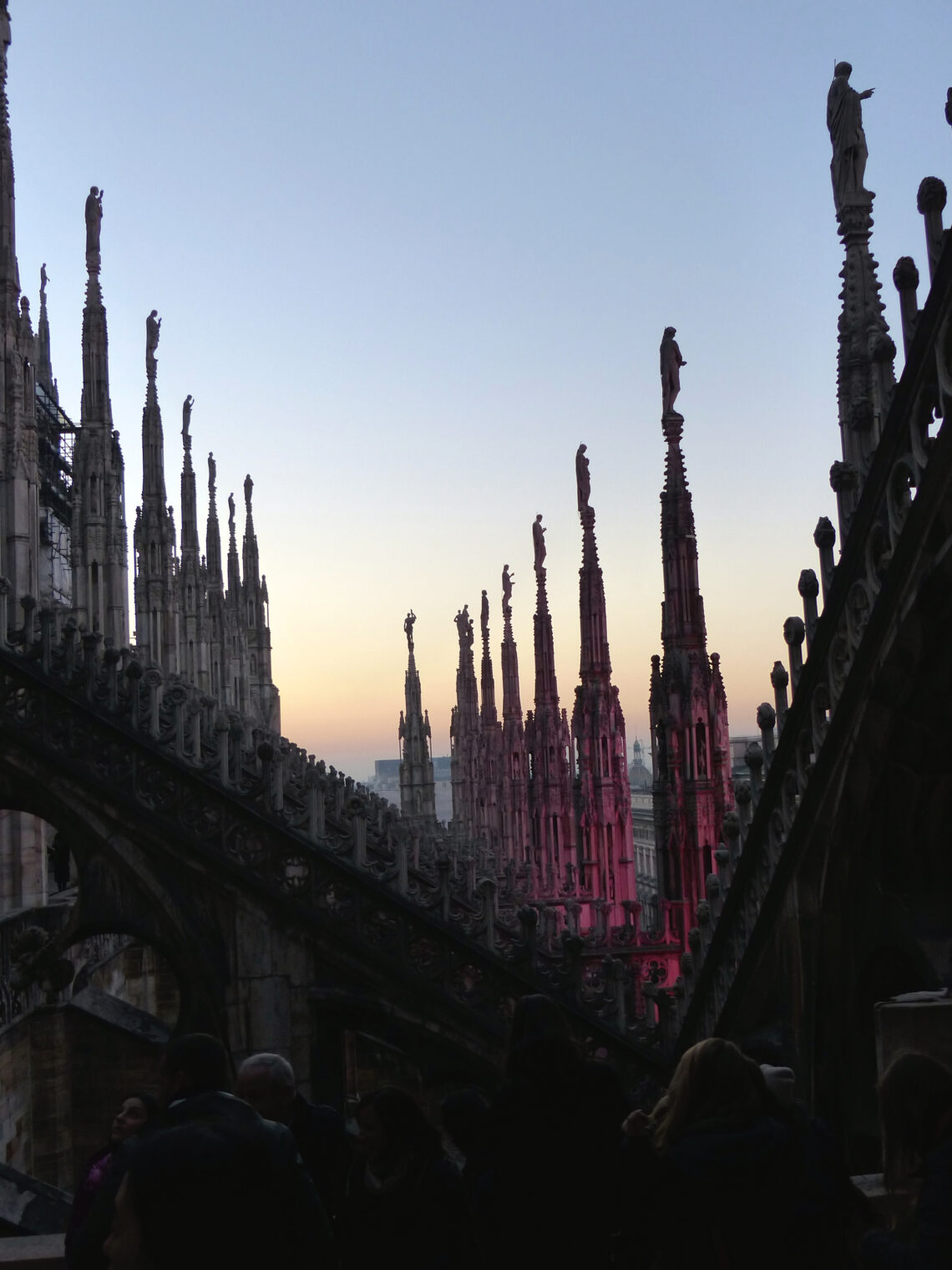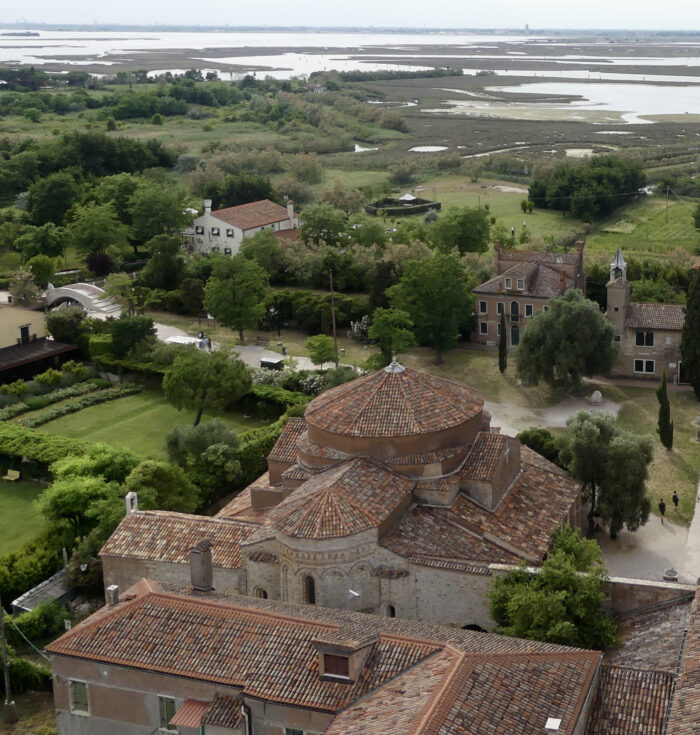
Re-Introducing Five Women
Florence. Ever since the third century, an area in the north of Florence was dedicated to Christianity; up to the Middle Ages it represented the city’s most important religious center. From the 500s on, a building complex there included three churches, one of which was Santa Reparata. Around 800, Sta (Santa) Reparata became the new seat of the bishop. “Raparata” is a name known to few Americans, but her story is well known in Italy. A Christian martyr from third-century Palestine, she was the patron of the city of Florence (Firenze) up until the late Middle Ages. Today people can visit the remains of the church named for her—underneath the Duomo of Florence.
Venice 1.0. The Church of Sta. Fosca is dedicated to a martyr from Ravenna. The church is located on the island of Torcello, which was Venice 1.0. Fusca (change of spelling is not a typo) of Ravenna was a child killed along with her nurse, Maura, around 250 AD, under the persecutions of the Roman Emperor Decius. A church dedicated to Sta. Fosca has existed on the site in Torcello since the first half of the 800s. It is still in use and bearing her name these 1200 years later.

Milan. Today if you go to the Milan Duomo (photo at top), you can descend beneath it to visit the site where Ambrose baptized Augustine. You’ll also find there the excavation remains of the Basilica of Sta. Tecla, a paleo-Christian church established in 350. It existed there for more than a thousand years before the Duomo was erected on its foundations. Thekla from Iconium is thought to have been a contemporary of the apostle Paul.
The key religious sites in Florence, Milan and Venice had important basilicas that bore the names of women—Thekla, Fosca, and Raparata.
Then there’s Rome. Just to name two:
The church of Sta. Pudensiana is recognized as the oldest place of Christian worship in Rome. It was built over a second-century house, probably during the pontificate of Pius I in 140–155; it re-uses part of a Roman bath facility still visible in the apse. Today the church continues to bear Pudensiana’s name and has a worshipping congregation.
A church named in honor of Pudensiana’s sister, Sta. Prassede (also spelled “Praxedes”) is a basilica that is also a monastic and titular church. As seen now, the structure was built in 817—but historians have reason to think a church existed here in the fifth century that was possibly built on an even older shrine dating back to 150. Praxedes and Pudensiana were known for courageously preparing the bodies of martyrs for burial. These women are thought to have descended from Pudens of Rome (2 Tim 4:21). Today a congregation continues to worship at Sta. Prassede, where mosaics dating to the ninth century feature Paul and Peter commending Praxedes and Pudensiana to Christ.
Why are these names and narratives of women so prominent in the church for more than a thousand years lost to so many of us? The architecture and art tell a story we are recovering.
Photos S Glahn (c) 2017, 2022





One Comment
Pingback: